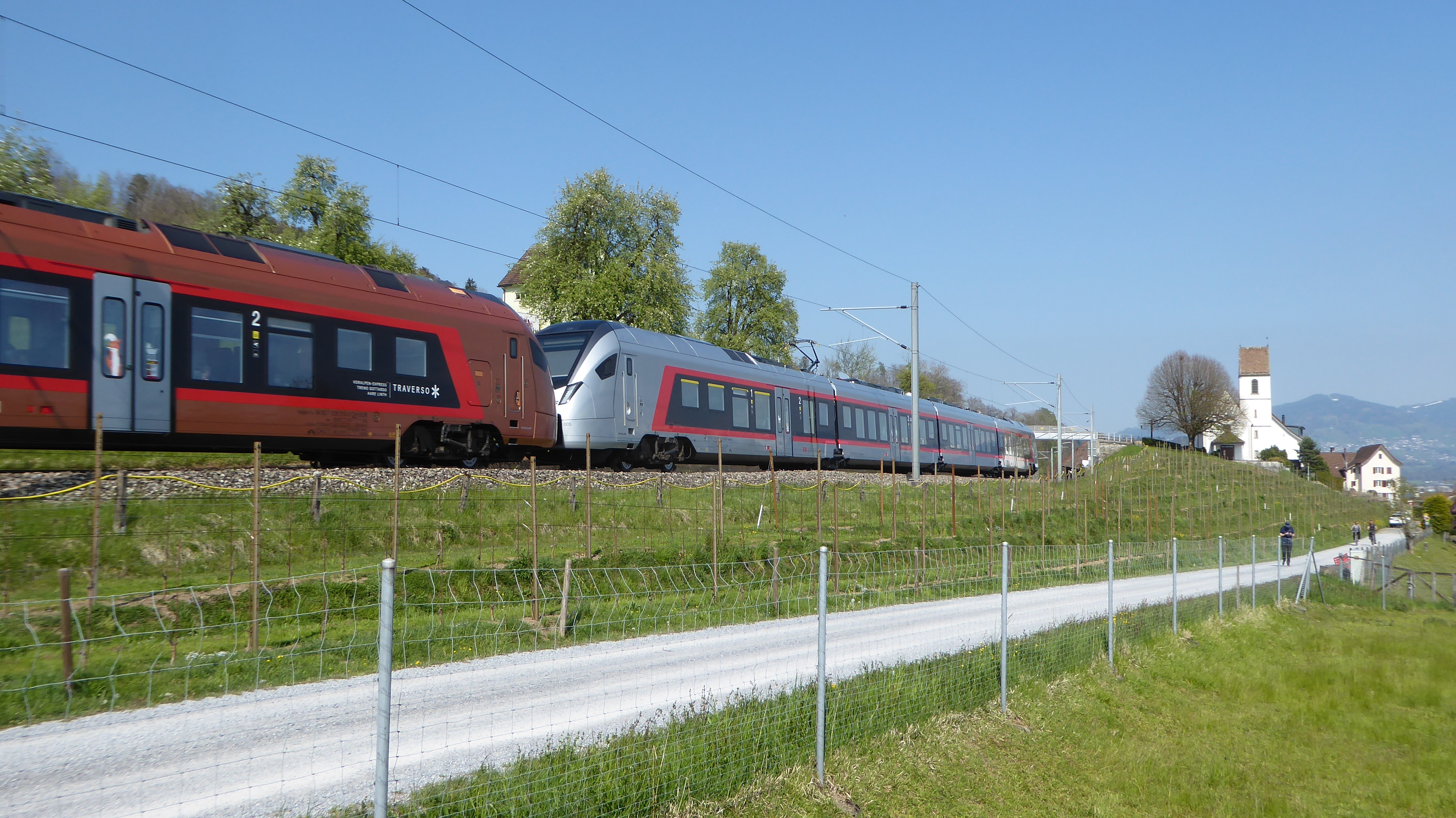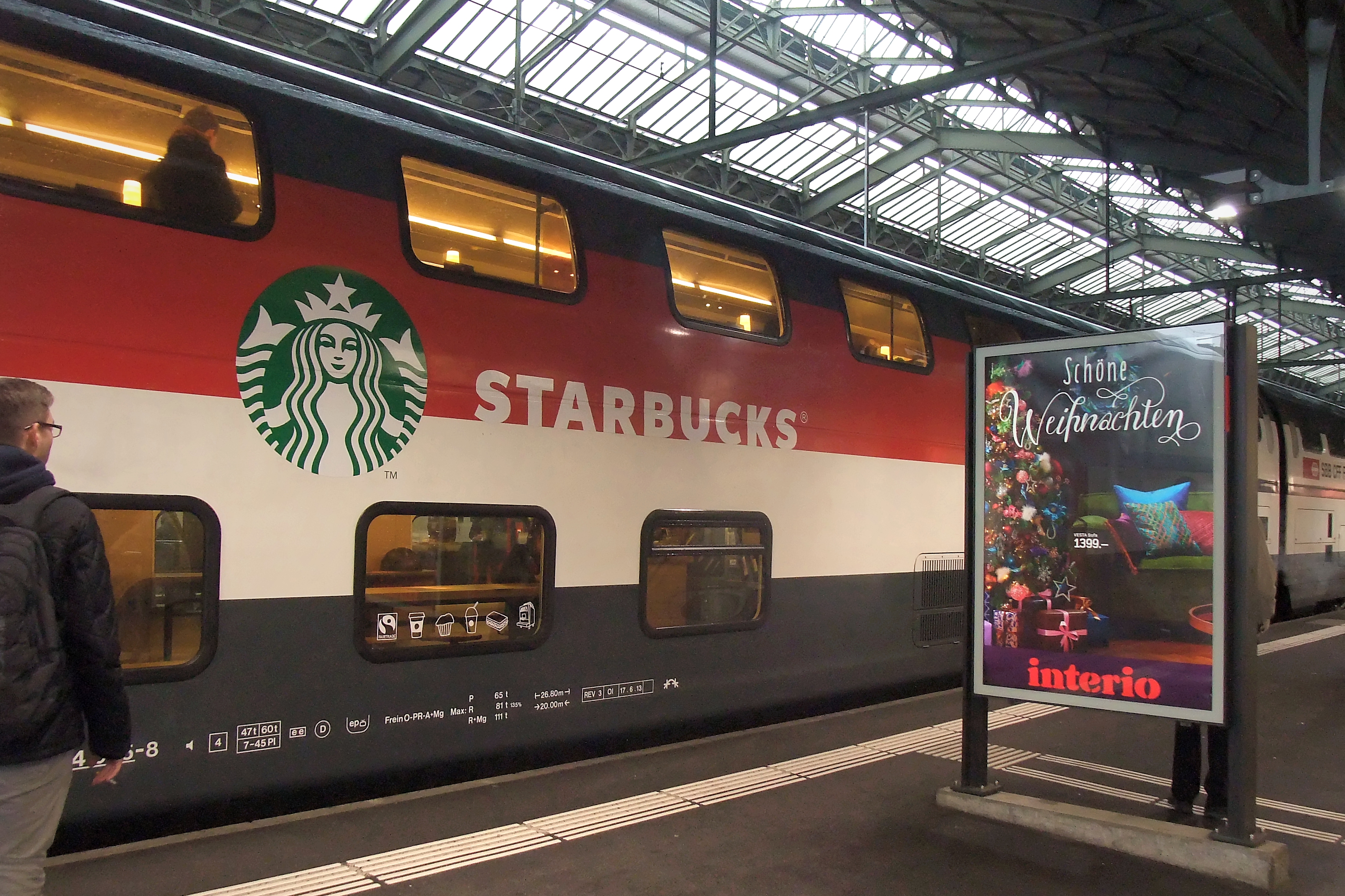|
Ziegelbrücke–Sargans Railway Line
The Ziegelbrücke–Sargans railway line is a railway line operated by the Swiss Federal Railways (SBB). Route It runs from Ziegelbrücke railway station as an extension of the Lake Zürich left-bank railway. It is an important rail link in the south and east of the canton of St. Gallen and follows the left bank of the Walensee and the Seeztal. It is double-track, except for a short, one-track section between Mühlehorn and Murg. It connects with the Rhine valley line in Sargans. Since the 1980s, there has been a loop in Sargans which allows EuroCity services and freight trains operating directly between Zürich and Austria to avoid reversing in the station. History The Ziegelbrücke–Sargans railway and its continuation to Chur was built as part of sections of different lines of the United Swiss Railways (''Vereinigte Schweizerbahnen'', VSB), which were opened independently of each other. First, the line between Chur and Sargans was opened as part of the Chur–Rheineck ... [...More Info...] [...Related Items...] OR: [Wikipedia] [Google] [Baidu] |
RegioExpress
RegioExpress (RE) is a fast regional train service in Switzerland, run by Swiss Federal Railways (SBB CFF FFS) or other railway companies (such as TILO, BLS, tpf, transN, THURBO or RhB). It is comparable to the Regional-Express in Germany, Austria and Luxembourg. Its speed is considerably faster than regional trains at the same level, as it does not stop at all stations served by the regional trains. Nonetheless, it is slightly slower than InterRegio trains. Swiss Federal Railways describes the trains as ones that serve "rapidly into the regions". Until the 2003 timetable overhaul (December 2002 to December 2003), the RegioExpress was limited in circulation. One of the main lines which ran as a RegioExpress line (abbreviation: RX) was the ''Rheintal Express'', from St. Gallen through Sargans to Chur (the other was the ''CityVogel'' from Zurich to Konstanz). As of the 2004 timetable overhaul, the RegioExpress was introduced as faster Regio (formerly regional) trains; the ... [...More Info...] [...Related Items...] OR: [Wikipedia] [Google] [Baidu] |
Südostbahn
The Südostbahn (German, literally meaning "South-Eastern Railway") – commonly abbreviated to SOB – is a Swiss adhesion railway company, and a network in Central and Eastern Switzerland. It resulted from the merger of the original SOB with the Bodensee–Toggenburg railway (BT) at the end of 2001. The Schweizerische Südostbahn AG (Swiss South-Eastern Railway SA) is a small private railway jointly owned by the cantonal and federal governments as an Aktiengesellschaft (AG). Network The rail network of the Südostbahn (SOB) consists of that formerly owned by BT in northeast Switzerland (between Lake Constance and Toggenburg): * Romanshorn– St. Gallen St. Fiden line, * St. Gallen–Herisau–Degersheim–Wattwil line, and * (Wattwil–)Ebnat-Kappel–Krummenau– Nesslau-Neu Sankt Johann line, and that previously owned by the original SOB located predominantly in Central Switzerland: * Rapperswil–Pfäffikon SZ line, * Pfäffikon S ... [...More Info...] [...Related Items...] OR: [Wikipedia] [Google] [Baidu] |
S4 (St
S4, S 4, Š-4, S.4 or S-4 may refer to: People * S4 (Dota player), Gustav Magnusson, Swedish ''Dota 2'' player * S4 (military), a logistics officer within military units Places * County Route S4 (California), a road in San Diego, California Science and mathematics Mathematics * S4 algebra, a variety of modal algebras, also called Interior algebra * Symmetric group S4 (S4), an abstract mathematical group * S4, a normal modal logic Chemistry * S4: Keep away from living quarters, a safety phrase in chemistry * Tetrasulfur (S4), an allotrope of sulfur Biology * Fourth heart sound, or S4, an abnormal heart sound often indicative of congestive heart failure or cor pulmonale * Fourth sacrum of the vertebral column in human anatomy * Sacral spinal nerve 4, a spinal nerve of the sacral segment Technology * S (programming language) version 4 * Hibernation a sleeping state in a computer * SG2 Shareable (Fire Control) Software Suite (S4) * Nikon Coolpix S4, a camera * Samsung Galaxy S4, a ... [...More Info...] [...Related Items...] OR: [Wikipedia] [Google] [Baidu] |
SBB-CFF-FFS RBDe 560
The RBDe 560 (in the old naming style, the RBDe 4/4) and its derivatives provide motive power for S-Bahn, suburban, and regional traffic on the Swiss Federal Railways ( SBB) network. The derivative versions belong to the SBB as well as various private railroads. The locomotive and its matching Bt model ''Steuerwagen'' (translation: control car/cab car/driving trailer) form compositions generally known as the ''Neuer Pendelzug'' (New Push-pull Train), which is the source of the acronym NPZ. An NPZ trainset usually includes one or more intermediate cars. General information In 1984 four pre-series sets (each consisting of a motor car and a driving trailer) were delivered. Ordered in 1981, they originally bore the RBDe 4/4 designation and road numbers 2100-2103. All four trainsets (RBDe 560 + Bt) were delivered in different color schemes, one of which was the livery used for the main series (blue over white sides, yellow doors, and red faces). The striking contrast to the green co ... [...More Info...] [...Related Items...] OR: [Wikipedia] [Google] [Baidu] |
Hamburg-Altona Station
Hamburg-Altona (or simply Altona) is a railway station in Hamburg, Germany, situated to the west of the city's main station, in the district which bears its name. A main line terminal station, most Intercity-Express (ICE) services to and from southern Germany begin and terminate at Hamburg-Altona. It also has an underground station (named Altona) which is served by the rapid transit trains of the Hamburg S-Bahn. The station is managed by DB Station&Service. History The original Altona station was built by the Altona-Kiel Railway Company at the end of the line from Kiel, some 300 metres south of the current station. It opened in 1844, at which time Altona was an independent city within the Duchy of Holstein (the old station is currently used as the present-day Altona borough's town hall). In 1866 the link line was opened, allowing trains to run through to Klosterthor station (near the main train station) and on to Berlin or Hanover. In 1867 the Altona-Blankenese railwa ... [...More Info...] [...Related Items...] OR: [Wikipedia] [Google] [Baidu] |
SBB-CFF-FFS Re 420
The Re 420, originally (and still widely called) Re 4/4II, series are the most common electric locomotives of the Swiss Federal Railways. They are used for passenger services throughout Switzerland alone or in pairs. For freight services, they are sometimes paired with the Re 620, especially in mountainous regions. That pairing is referred to by the term Re 10/10. The Re 430, originally known as the Re 4/4III, are a derivative of the Re 420 modified for higher traction but lower speed. The Re 420 locomotives were produced over a period of 21 years, from 1964 to 1985. Re 4/4III (Re 430 SBB/Re 436 Private) Subseries: When Südostbahn had the opportunity to buy one of the first batch of 50 Re 4/4II locomotives before delivery, it had the gear modified for higher traction and lower speed for the steep routes of the SOB. This locomotive was delivered as number 41 (and is now SBB 11350). Based on the SOB experience, the SBB ordered a batch of 20 Re 4/4III in 1969 for use on the Gotth ... [...More Info...] [...Related Items...] OR: [Wikipedia] [Google] [Baidu] |
SBB-CFF-FFS Re 460
The Re 460 (popularly known as the Lok 2000) series are modern four-axle electric locomotives of the Swiss Federal Railways. Upon their entry into service in the early 1990s, they replaced the , Ae 4/7, and series units, and displaced many of the Re 4/4II series into lesser duties. The series was introduced as part of the Rail 2000 project, a massive project to modernise and improve the capacity of Switzerland's railways. While originally designed as a multipurpose locomotive, they are now used for passenger services only, often in conjunction with the IC 2000 double-decker trains (often used to pull InterCity and InterRegio trains in German and French language areas). Their freight role has been assumed by Re 482s. They are maintained at Yverdon. Assignment When SBB was split up on 1 September 1999, Re 460 079–118 were assigned to the freight division, later becoming SBB Cargo. It was seen as an advantage to use all Re 460, which had been designed for 200 km/h, fo ... [...More Info...] [...Related Items...] OR: [Wikipedia] [Google] [Baidu] |
IC2000
The IC 2000 is a double-deck train in Switzerland and is run by Swiss Federal Railways (SBB-CFF-FFS) as part of its InterCity service. Top speed is 200 km/h. The train set can be composed of up to 10 coaches and provides close to 1,000 seats, according to SBB. In 1997-2004, the consortium, made up of Schindler Waggon, Pratteln (later Bombardier Transportation Switzerland) and Alstom delivered 341 coaches to SBB, of which about 320 coaches are still in use as of December 2009. Overview IC 2000 was the first double-deck train in use on a nationwide scale. Previously, most, if not all, double-deck trains, belonged to the Zürich S-Bahn network. The IC 2000 typically has a dining or a bistro car, and a snacks trolley service on the upper level throughout the train set. Both the first and second class coaches feature luggage racks on both decks; in addition, small suitcases can be stored under the seats. In November 2013, the first Starbucks café coaches on SBB-CFF-FFS were ... [...More Info...] [...Related Items...] OR: [Wikipedia] [Google] [Baidu] |
InterCity
InterCity (commonly abbreviated ''IC'' on timetables and tickets) is the classification applied to certain long-distance passenger train services in Europe. Such trains (in contrast to regional, local, or commuter trains) generally call at major stations only. An international variant of the InterCity trains are the EuroCity (EC) trains which consist of high-standard coaches and are run by a variety of operators. History The Inter-City Rapid Transit Company was an Ohio interurban company, which began operations in 1930 as it had purchased its route from the Northern Ohio Traction & Light Company. It remained in operation till 1940. The use of ''Inter-City'' was reborn in the United Kingdom: A daily train of that name was introduced in 1950, running between the cities of London and Birmingham. This usage can claim to be the origin of all later usages worldwide. In 1966 British Rail introduced the brand InterCity for all of its express train routes, and in 1986 the ter ... [...More Info...] [...Related Items...] OR: [Wikipedia] [Google] [Baidu] |



